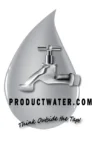Frequently Asked Questions
It's collecting rainwater from roofs or surfaces and storing it for later use, usually for irrigation or—if treated—for drinking.
Yes! Non-potable use is usually easy, but potable systems require permits and must meet strict standards—check your local codes before installing.
Potable systems treat water for safe drinking and must be permitted, while non-potable setups supply water for things like irrigation and laundry.
You'll need a catchment (roof/gutters), pipes, a storage tank, and filters. Potable setups also need advanced filtration, disinfection, and a pump.
Yes, with proper plumbing, multi-stage filters, and a booster pump. Always disinfect and maintain your system for safety.
Check local rules, estimate household water needs, select certified system parts, and plan for regular testing and maintenance.
Basic non-potable systems: $1,000–$3,000. Potable systems: $5,000–$15,000+, depending on treatment and size. Permits and labor add to costs.
DIY is okay for simple non-potable setups. Potable systems should be professionally installed and inspected for compliance.
It runs alongside your downspout like a “sidecar.” No cutting or replacing, just an extra channel that diverts some rainwater into your tank.
No. Product Water works anywhere, even if you’re not eligible for city rebates or grants. Every home is eligible.
Tanks and hoses are built to flex and expand safely. Optional valves release pressure so cold snaps won’t crack your system.
Anytime—after gutter work, before landscaping, or even mid-project. Our flexible hoses fit your timeline and can be moved later if needed.
Didn't Find Your Answer?
We review every submission to expand and update this FAQ for everyone’s benefit.
